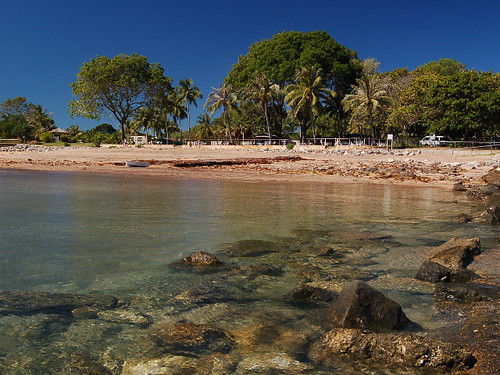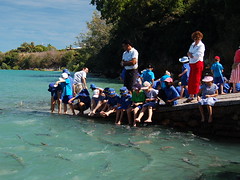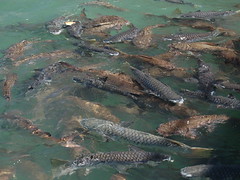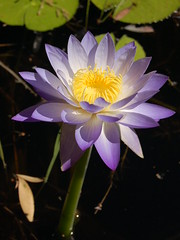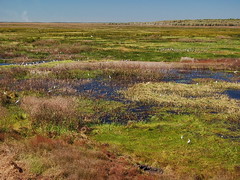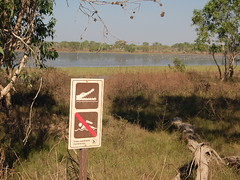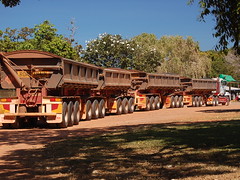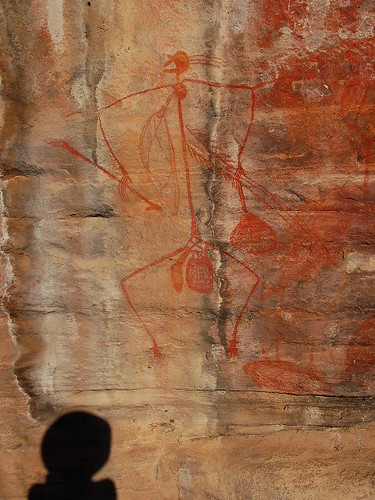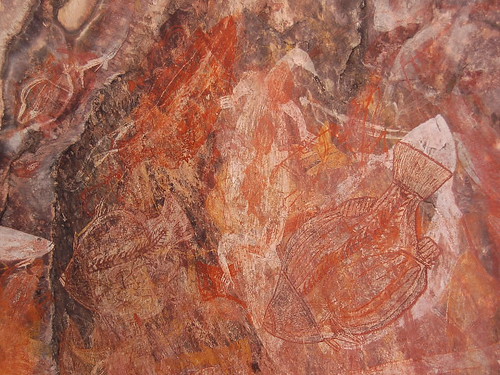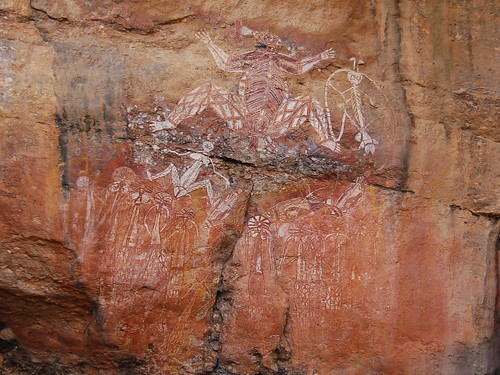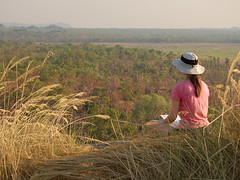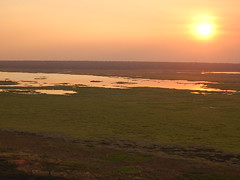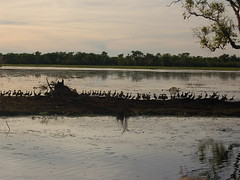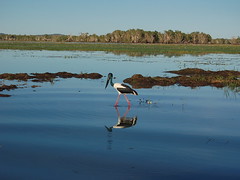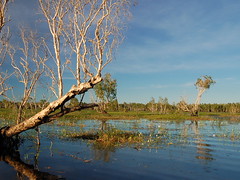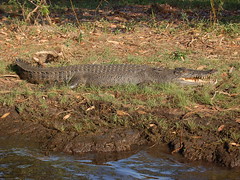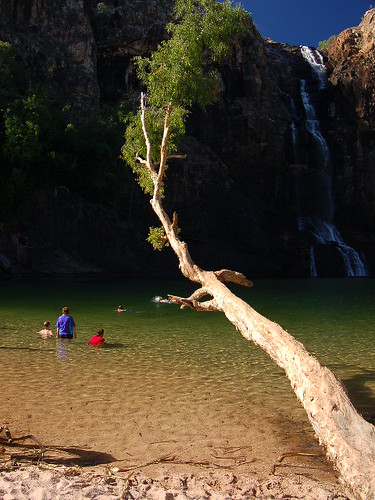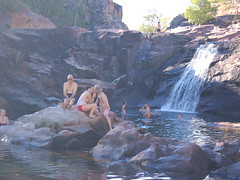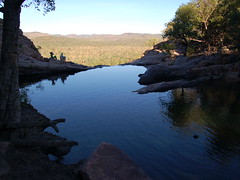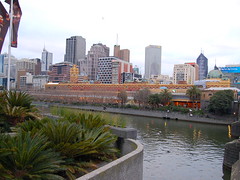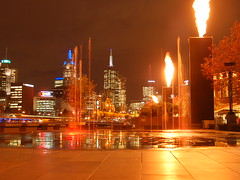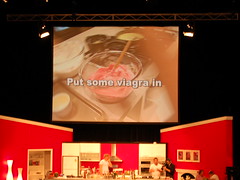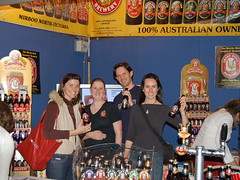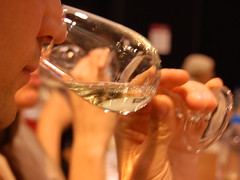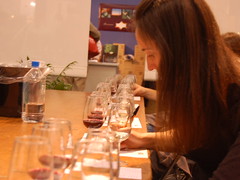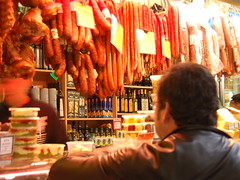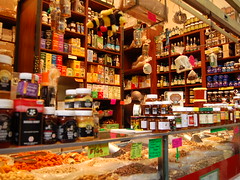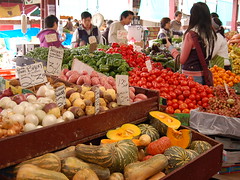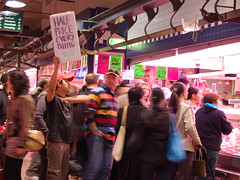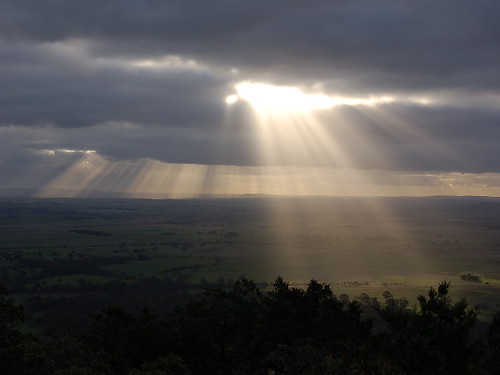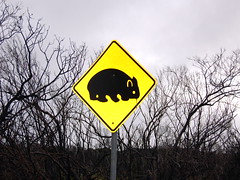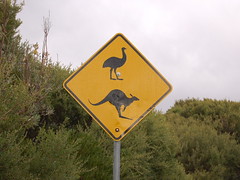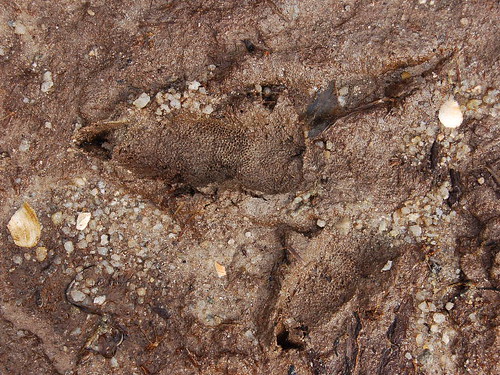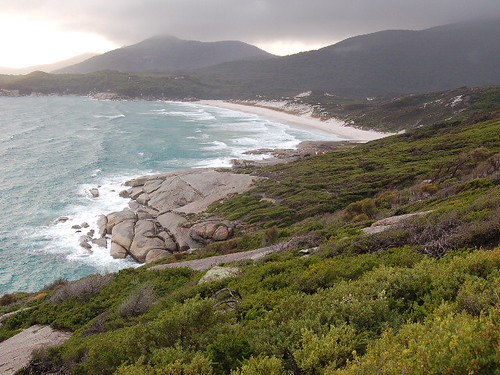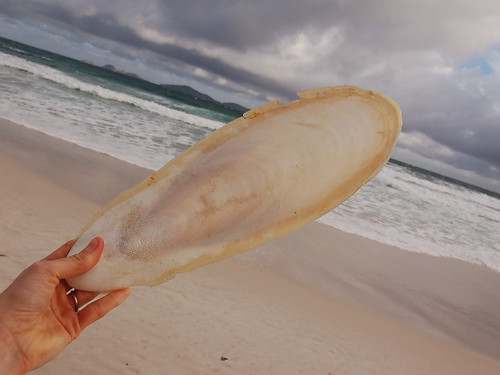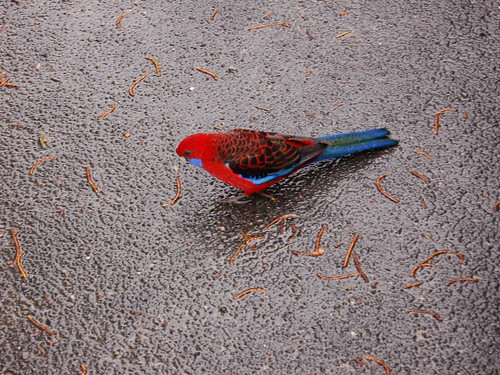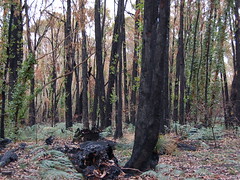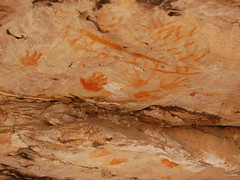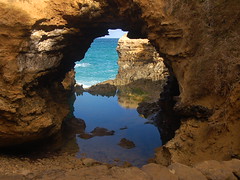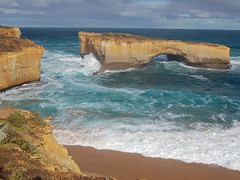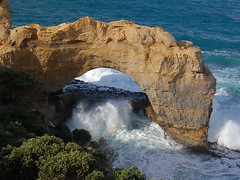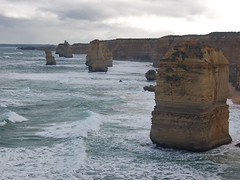Swimming with the Freshies
(steve)
One interesting aspect of life in the Northern Territory is the relationship with water. The land is perpetually hot, with the sun beating down and humidity often above 70%. Since there are a nice coast line and a host of rivers, lakes, and billabongs, it seems like it would be nice and easy to head down to for a dip to remedy the boiling heat. Such is life that here in the Top End, there are two major deterents for jumping blindly into the nearest water hole, crocodiles and box jellyfish.
The box jelly inhabits the coastal ocean during most of the year, necessitating a safety suit or a large net to keep the buggers out. Affectionately known as "stingers," these nasty guys can deliver fatal stings to adults. That rules out the ocean for us. How about those rivers and billabongs? Let's talk croc now (although saltwater crocs live in the ocean too). There are two types of croc around these parts, saltwater and freshwater. Salties are the stuff of horror movies, growing to be over 15 ft long and attacking boats. Freshies are considered harmless since smaller and only eat fish. The rules of thumb for swimming are: 1. If you see a croc sign, don't go in. 2. If you don't, be scared out of your mind and go in at your own risk. With these rules in mind, let's journey into the waterholes around the Top End.
Nitmiluk National Park is the home of the Katherine River as it winds its way gently through a series of 13 gorges before heading to the coast. As an added bonus, an additional waterfall is found within the park borders.
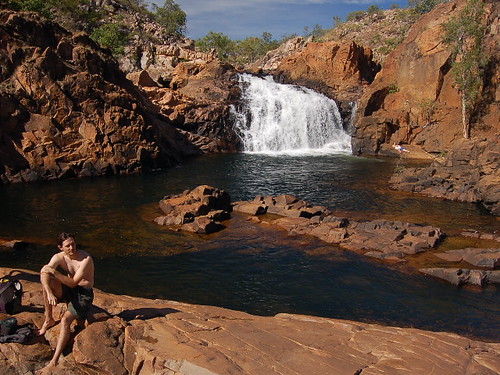
After pushing through a horde of 12-15 year old American tour groups, we made our way to look at Edith Falls. The plunge pool is a popular swimming spot with crystal clear water and a nice 50 ft fall. Rule 1 was not in effect, but there was a notice for freshies in the area. Although tempted to enter, we walked around above the fall and were rewarded with a wonderful pool that was almost guaranteed to be croc-free (as they would have to climb the waterfall to reach it). The pool was great, with its own recirculating current that brought you back to the waterfall.
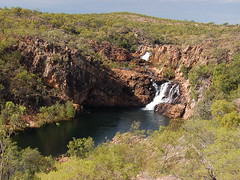
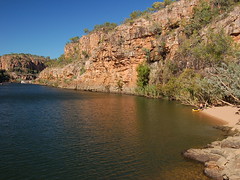
Our next stop was at the Katherine Gorge portion of the park. Here we were introduced into Aussie style camping. The thing to do here is get a beefy trailer behind your 4WD and tackle the outback. Some of the trailers were pretty interesting, folding out to reveal all kinds of canvas construction not thought possible. Usually these contraptions were accompanied by bbq apparatus of some sort. We felt left out with our rental sedan.
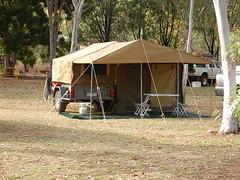
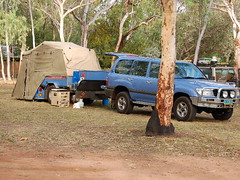
Our main activity while in Katherine Gorge was river kayaking. We were assured there were only freshies in the river, so it was ok to go. After no instruction or safety talk, we were let lose on the river. Our only instructions: portage over the rapids (both ways), and keep life jackets on at all times. Fair enough. We began by heading upstream. Eventually we reached the end of the first gorge denoted by the first rapid section. These are modest rapids (2 rating) with a span of about 20 ft or so. We jump out of the boat and begin the portage process. It takes 30 minutes of tugging with the 3 ft of bowline provided to get the boat into the second gorge, including some interesting moments walking more or less straight up three successive rapids. We accomplished this once more before entering the third gorge an hour later. With our victory came a nice lunch spot.
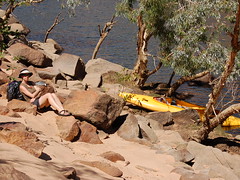
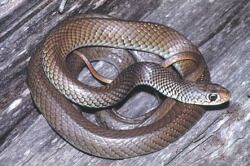
On the ride back things got a little more interesting. Looking around meekly, we didn't see any reason not to ride the boat down the rapids and save ourselves the effort. So begins the life of crime. The first rapids were successfully negotiated with a smirk. Buoyed by our success, we shot through the first set of rapids into the next canyon. At the third set, we decided to play conservative and walk the boat around an ominous looking rock. Spying a nice walking path, we lifted the boat and proceeded to walk. Apparently this set of alarms everywhere, as rangers descended on us and demanded we place the boat in the water immediately. It seems, given the choice, it was more dangerous for us to carry the boat on land than walk downstream through rapids towing a boat. To show our displeasure (as you can tell, I'm still angry about this one), we jumped in and rode the boat through the last rapids in full ranger view. Final kayaking note, didn't see a single croc. Other tidbit is Karen found a Black Whip Snake rushing between her boots during a walk, about 50 ft from the car. Yeah, it's poisonous.
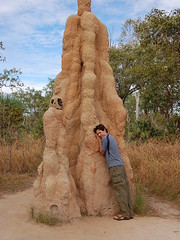
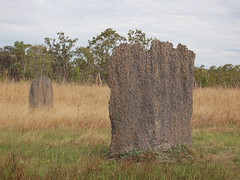
Our tour of popular swimming locations took us to Litchfield National Park, also home of the magnetic termites. These clever little guys build large, but thin, mounds to obtain the most stable temperature. Typically the mounds fall along nearly north/south orientation to catch the most sun. Curiously, the ability to do this clever bit of engineering is genetic with failure resulting in loss of the entire colony (has Boeing tried this approach yet?). Since there are no native Aussie grazing animals, termite mounds fit the bill. They dot the countryside in the way that cows do in a lot of other countries. The cathedral mounds are pretty impressive too. The tallest can be over 15 ft high. Along the way, we stopped at a couple of nice swimming spots where we just had to cool off.
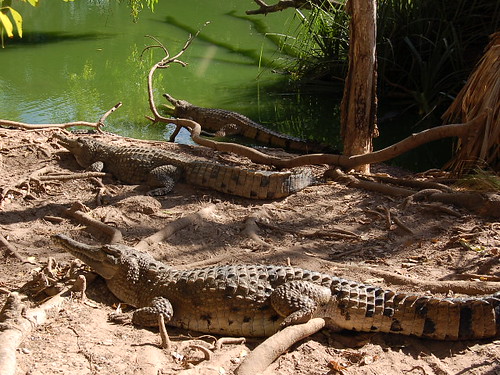
Finally, we decided to stop at a croc farm on the way back to Darwin to see just what these harmless freshies looked like. Take a look at the photo! Some were about 10 ft long, and all of them had those enormous teeth. We swam in rivers that had these guys present! Yikes.
With no real mishaps, we prepare to move on to the last stage of our adventure in Oz. Off to the reef and islands before heading home. While we loved our life for the past 6 months, it will be good to get home.
